Villagers display folk costume in Pulan County, SW China's Xizang
Xinhua, September 12, 2024 Adjust font size:
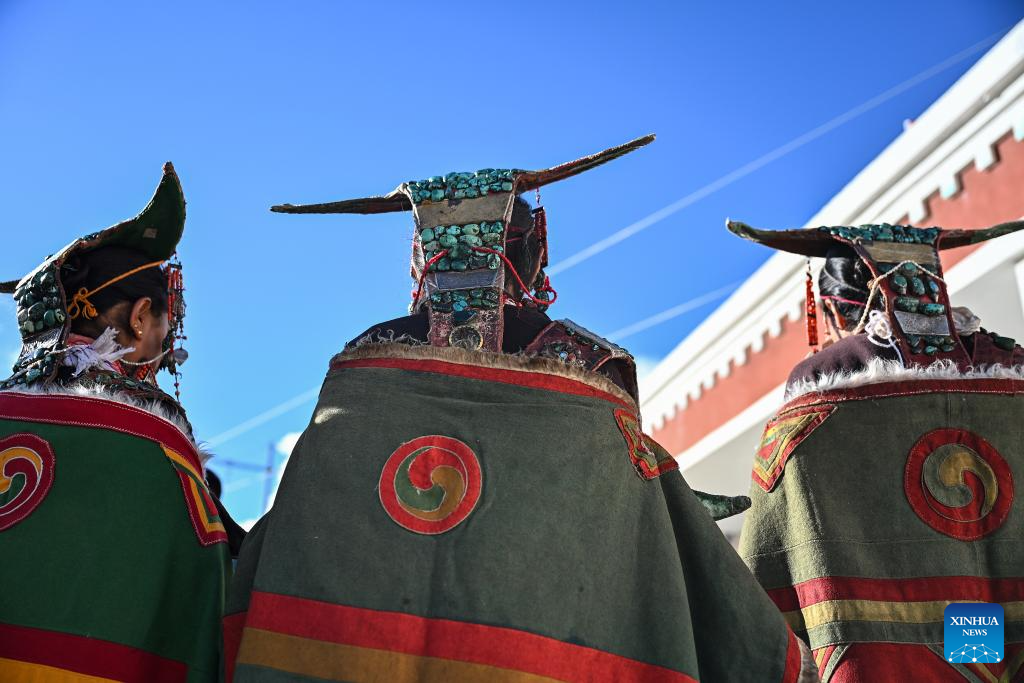
Villagers display folk costume in Kejia Village of Pulan County, southwest China's Xizang Autonomous Region, Sept. 9, 2024.
Originating in Pulan County, Pulan folk costume has been a traditional garment worn at celebrations for over a millennium. Weighing more than 20 kilograms, a piece of this unique costume is usually decorated with rare metals and jewels, like gold, silver, beeswax, coral and turquoise. (Xinhua/Sun Ruibo)
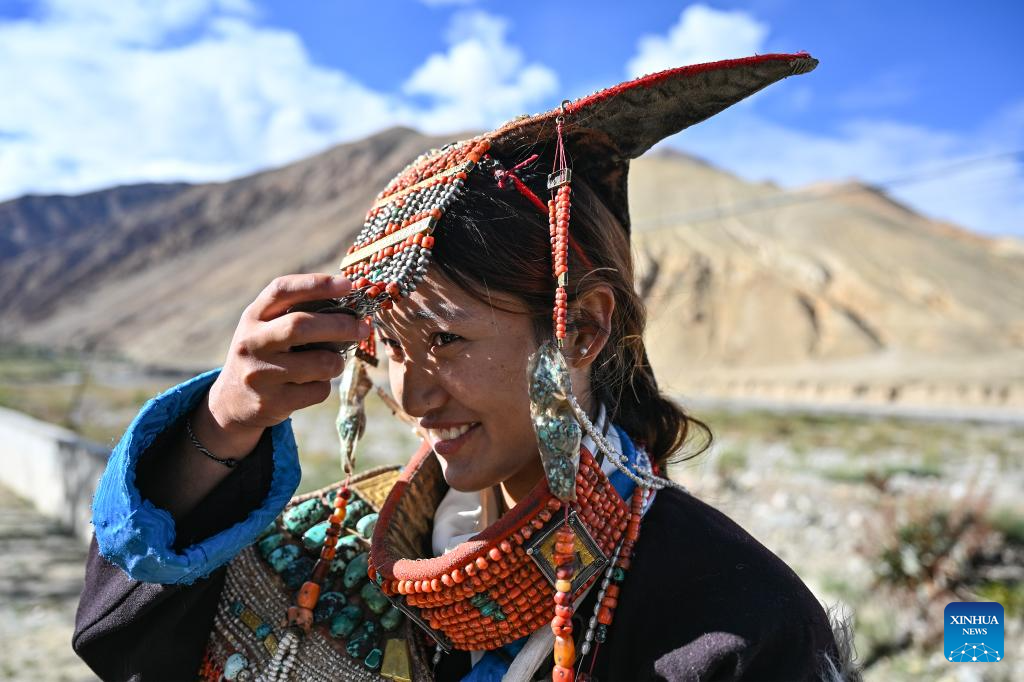
A villager displays folk costume in Kejia Village of Pulan County, southwest China's Xizang Autonomous Region, Sept. 9, 2024.
Originating in Pulan County, Pulan folk costume has been a traditional garment worn at celebrations for over a millennium. Weighing more than 20 kilograms, a piece of this unique costume is usually decorated with rare metals and jewels, like gold, silver, beeswax, coral and turquoise. (Xinhua/Sun Ruibo)
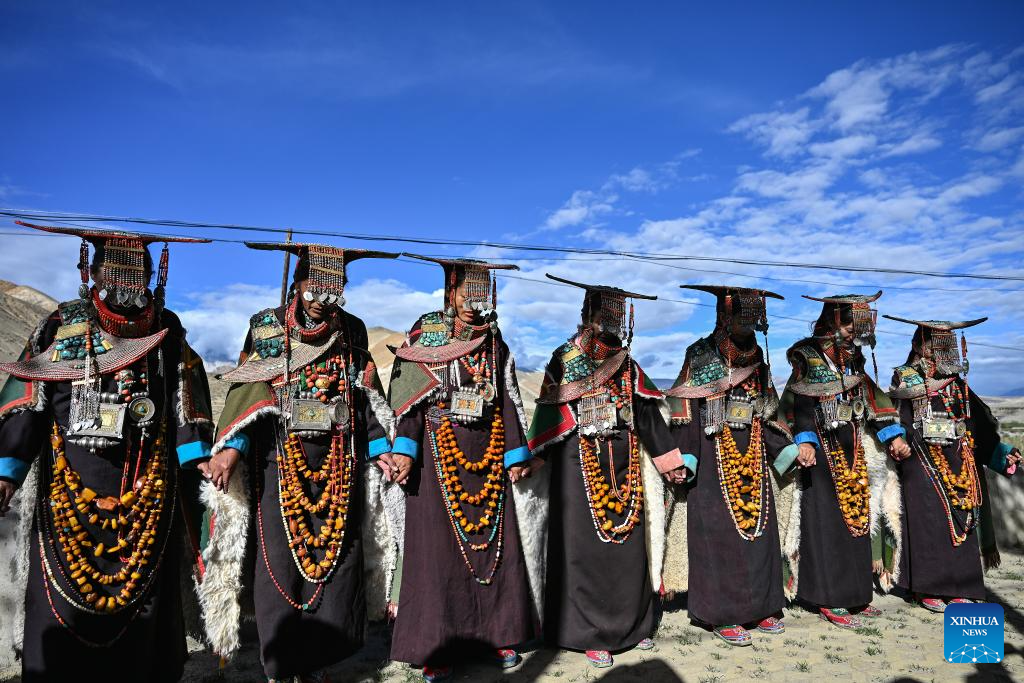
Villagers dressed in folk costume dance in Kejia Village of Pulan County, southwest China's Xizang Autonomous Region, Sept. 9, 2024.
Originating in Pulan County, Pulan folk costume has been a traditional garment worn at celebrations for over a millennium. Weighing more than 20 kilograms, a piece of this unique costume is usually decorated with rare metals and jewels, like gold, silver, beeswax, coral and turquoise. (Xinhua/Sun Ruibo)
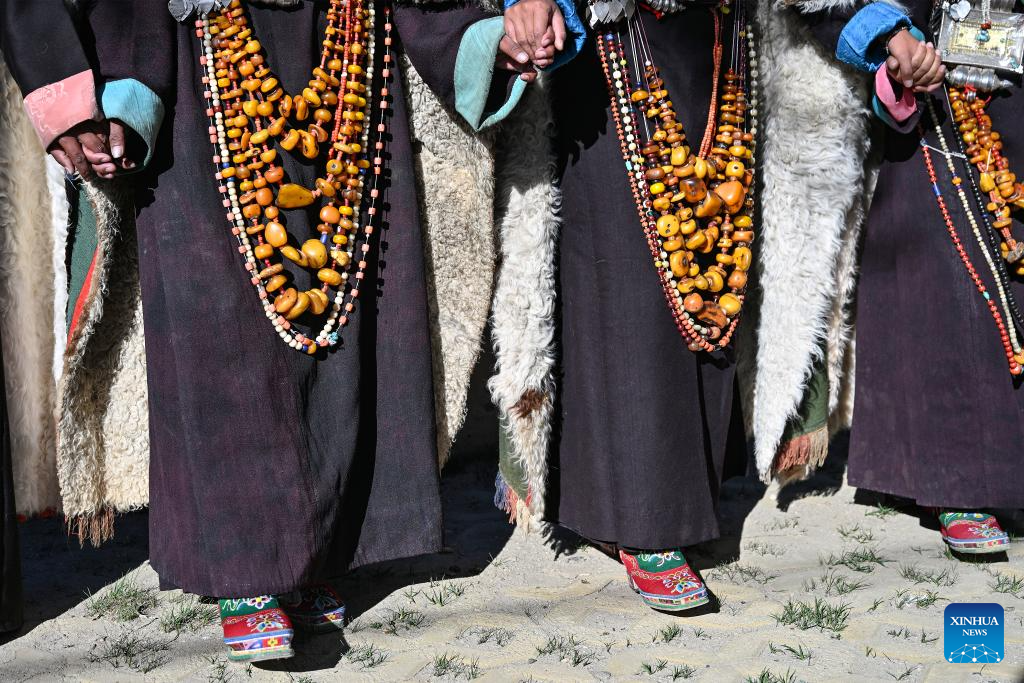
Villagers dressed in folk costume dance in Kejia Village of Pulan County, southwest China's Xizang Autonomous Region, Sept. 9, 2024.
Originating in Pulan County, Pulan folk costume has been a traditional garment worn at celebrations for over a millennium. Weighing more than 20 kilograms, a piece of this unique costume is usually decorated with rare metals and jewels, like gold, silver, beeswax, coral and turquoise. (Xinhua/Sun Ruibo)

Villagers dressed in folk costume dance in Kejia Village of Pulan County, southwest China's Xizang Autonomous Region, Sept. 9, 2024.
Originating in Pulan County, Pulan folk costume has been a traditional garment worn at celebrations for over a millennium. Weighing more than 20 kilograms, a piece of this unique costume is usually decorated with rare metals and jewels, like gold, silver, beeswax, coral and turquoise. (Xinhua/Sun Ruibo)
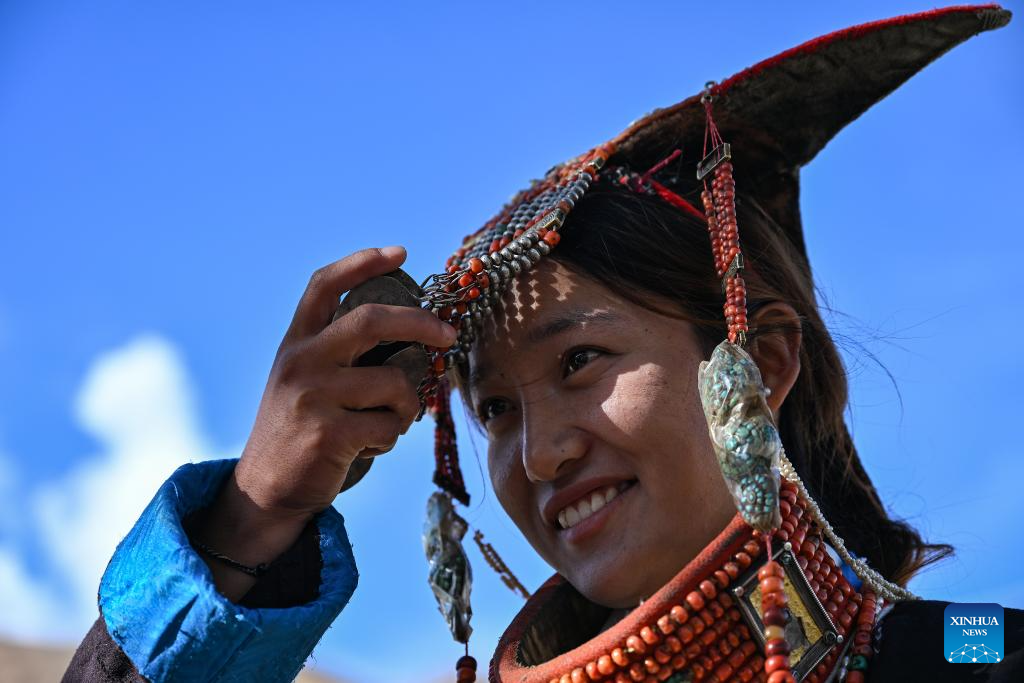
A villager displays folk costume in Kejia Village of Pulan County, southwest China's Xizang Autonomous Region, Sept. 9, 2024.
Originating in Pulan County, Pulan folk costume has been a traditional garment worn at celebrations for over a millennium. Weighing more than 20 kilograms, a piece of this unique costume is usually decorated with rare metals and jewels, like gold, silver, beeswax, coral and turquoise. (Xinhua/Sun Ruibo)

A villager displays folk costume in Kejia Village of Pulan County, southwest China's Xizang Autonomous Region, Sept. 9, 2024.
Originating in Pulan County, Pulan folk costume has been a traditional garment worn at celebrations for over a millennium. Weighing more than 20 kilograms, a piece of this unique costume is usually decorated with rare metals and jewels, like gold, silver, beeswax, coral and turquoise. (Xinhua/Sun Ruibo)
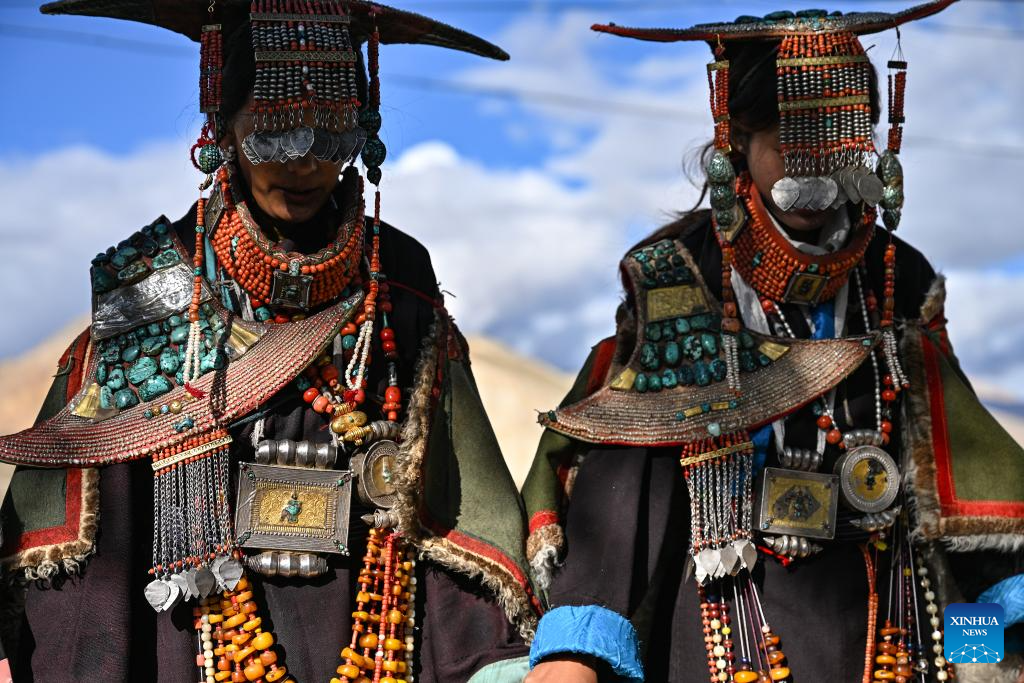
Villagers dressed in folk costume dance in Kejia Village of Pulan County, southwest China's Xizang Autonomous Region, Sept. 9, 2024.
Originating in Pulan County, Pulan folk costume has been a traditional garment worn at celebrations for over a millennium. Weighing more than 20 kilograms, a piece of this unique costume is usually decorated with rare metals and jewels, like gold, silver, beeswax, coral and turquoise. (Xinhua/Sun Ruibo)
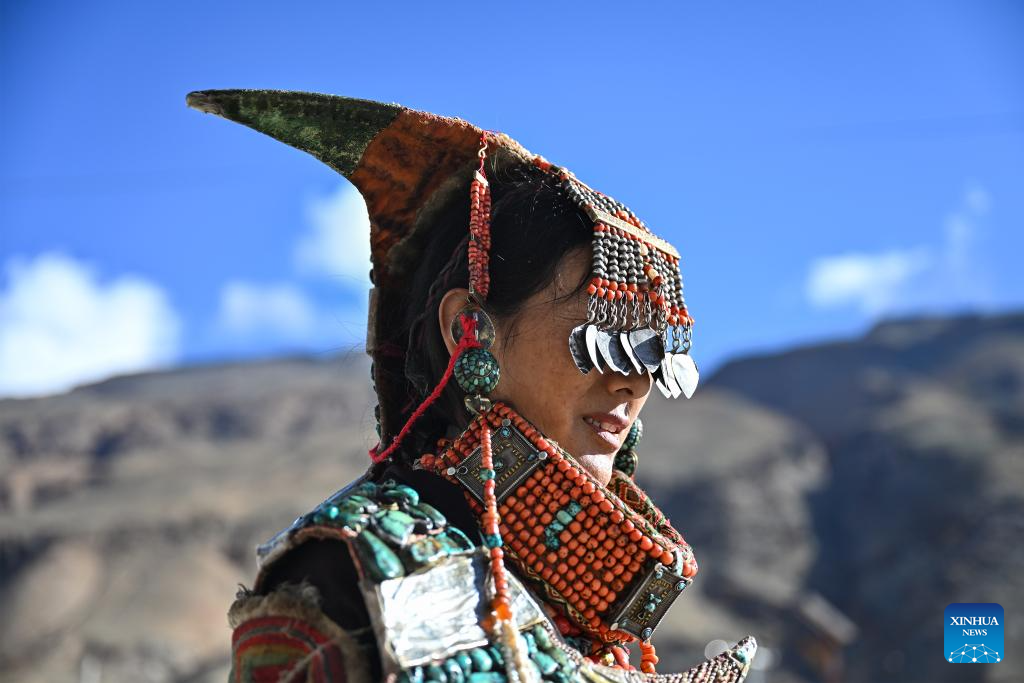
A villager displays folk costume in Kejia Village of Pulan County, southwest China's Xizang Autonomous Region, Sept. 9, 2024.
Originating in Pulan County, Pulan folk costume has been a traditional garment worn at celebrations for over a millennium. Weighing more than 20 kilograms, a piece of this unique costume is usually decorated with rare metals and jewels, like gold, silver, beeswax, coral and turquoise. (Xinhua/Sun Ruibo)